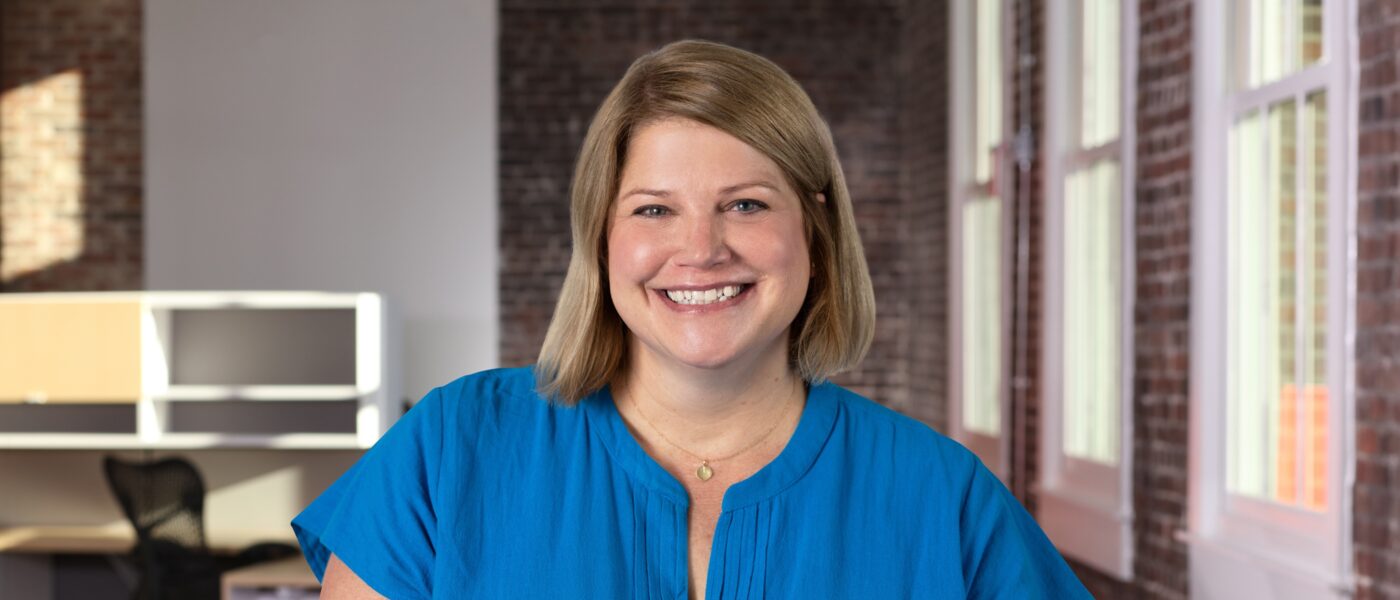Meet Paula Mastbrook! Paula brings a wealth of knowledge from her nearly thirty years in practice. With international experience and her commitment to thoughtful design and quality craftsmanship, Paula is a valuable addition to the Curran team. From dreaming about designing airports to finding inspiration in the natural world, Paula embodies the balance between creativity and practicality that defines excellent architecture.
What drew you to architecture to begin with?
Architecture has always been my plan and goal. I went to Ball State and during my studies, I participated in a semester abroad program where we were based primarily in London for a few months, then traveled around the continent. That experience really solidified my passion for the field—seeing how architecture creates a sense of place and serves communities in different cultural contexts.
Tell us about your career journey leading up to Curran.
After graduation, I actually went back to Europe with a guest work visa—that London experience had made such an impact that I wanted to return. I lived within walking distance from where we worked, close to the West End with all the theaters and attractions. I absolutely loved it there.
After that six-month work experience, I was ready to come back to the Midwest. Family really keeps me grounded here—my siblings were having kids, and I didn’t want to miss out on my chance to become their favorite Aunt.
I stayed at a small firm in Muncie for about 19 years before moving to Indianapolis and working at a couple of bigger firms—time flies when you’re enjoying what you do!
What are you looking forward to as you’re starting your work with Curran?
I’m excited about the kind of symbiosis that happens when you’re working with other people who have expertise in your same industry. You learn from each other, so I’m looking forward to learning from my colleagues and getting started on some projects, serving our clients. It’s exciting.
What’s a project or building type that you’ve never worked on but would love to tackle?
An airport would be really fun! They’re very logistical in terms of movement from one place to another, dealing with the scale of people and movement. But airports are also transitional spaces that you’re only in briefly. There’s usually something in the airport that gives you an immediate sense of place when you land somewhere different, and that’s fun to think about—how you would create that sense of place.
Tell us about a challenging project you’ve worked on and how you approached it.
What comes to mind is a university project I worked on that had five different departments within one building. It involved a lot of listening and communication. We would meet individually with different user groups, then bring all of that information back into the project. Sometimes it meant helping figure out the logistics of shared resources and how to best align different competing demands, blending all of that into a project that would serve the users well.
What trends in architecture today excite you, and are there any that concern you?
I like biophilic design—it’s about getting more patterns that mimic nature and more light into buildings, things that help support our wellness as humans. On the more groundbreaking side, there’s a Swiss firm, Herzog & de Meuron, that has a building where everything is wood and completely compostable. This level of sustainability, where all materials are renewable and compostable, is amazing to think about.
For concerns, I’ve definitely seen over my career more and more push for everything to be faster—schedules to be compressed. This wanting everything faster is concerning because it means the quality often suffers. If you go too fast, you’re going to lose quality in the documentation, which results in loss of quality in the product.
That’s one of the things I’m excited about here at Curran. I think it’s part of the culture that we’re concerned about quality, so I don’t feel like that’s going to be a pressure here as I’ve seen it become elsewhere.
If you had an unlimited budget and total creative freedom, what kind of space would you design?
I tend toward more minimalist or modern design where the integrity of materials is exposed. I would want to design something where I could use all of the most amazing natural materials that you usually can’t afford—just a lot of wood and stone.
On IU’s campus, they have an international studies building with different stones from different countries around the world. I love that they did that—it’s so cool. I would just have fun with materials.
How do you think architecture can address current social or environmental challenges?
Designing affordable multi-family housing projects helps to address housing shortages and creates less stress on our environment through efficient use of space. Energy efficiency standards have really been helpful too. They’re helping people prioritize sustainability.
Is there a building that you feel really gets it right in terms of how design serves the community?
The Indianapolis Central Library is a great example! I love the way it marries the old historic building with the expansion, with that atrium space that has the big metal tree-like columns. It feels like a very uplifting space. I used to work across the street, so I could go to the library during my lunch hour. The library is welcoming to everyone in the community and marries form and function beautifully.
What kinds of spaces support your creative work?
I love libraries—the quiet atmosphere and all the books organized on the shelves. I also love the space I’m in now here at Curran, with the high overhead space. It’s such a luxury to have that much open space above you, and natural light from these giant windows. The windows near my desk are above head height which means there are no distractions from them—just sky and trees. It really reinforces why thoughtful design matters so much in our daily experiences.
